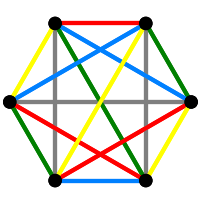Section1.2Using This Book
One key feature of these notes is that we use Sage cells. These contain sage code that you can run by clicking on the evaluate button. For example
Some of these cells may define functions of variables which can be used without definition in subsequent Sage cells in the current section. If you evaluate a cell without first previously evaluating its predecessors (in the current session), you may get an error message. Stuff defined in one section is not available in other sections.
Note that you may edit the code in a Sage cell and evaluate it. This will allow you, for example, to investigate the effect of changing parameters on the behavior of some code. You could also copy the code in the cell and paste into a Sage worksheet.
One difficulty for the authors is that Sage itself is evolving. The source file for these notes contains the expected output of each command and, as part of the production process, the output of the Sage commands is compared to the predictions. In addition to coping with evolution, this provides a good check for bugs in our code.
